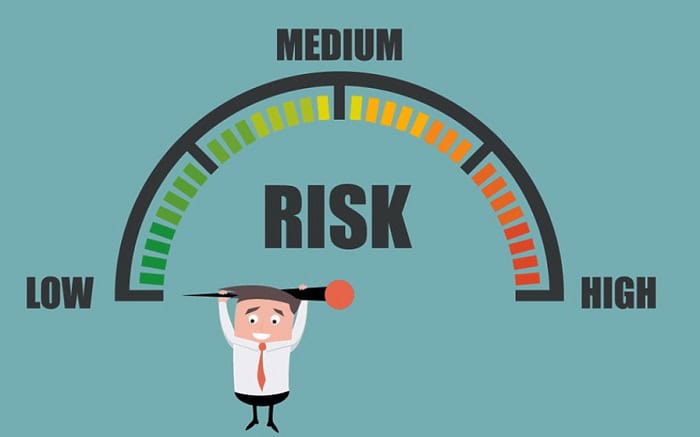An MVP is a version with minimal necessary features to attract prospective customers. Designing an MVP is an excellent strategy for gathering insightful input and understanding market demand. What does MVP stand for in software development? The article discusses it in detail.
MVP is a Minimum Viable Product. The most straightforward approach to describe MVP is as a transitional stage between the initial stages of development and the final product. MVP is one of the key stages in the development process.
Analysis and creation are the central supervision part of MVP development. You can use the theories to determine the market’s necessity. Read below to learn what does MVP stand for in software development.
See Also: Top 5 Software Development Models Every Company Should Know
What Does MVP Stand For In Software Development?
What does MVP stand for in software development? “Minimum Viable Product” is MVP stands for in software development. An MVP is a condensed version of a software product with only the core features and functionalities intended to satisfy the fundamental requirements of early users and stakeholders.
So, what does MVP stand for in software development? Before devoting more time and money to full-scale development, an MVP’s primary goal is to swiftly and affordably test a software concept or idea in the market, get user input, and validate assumptions.
See Also: Best Article Writing Software To Ease Your Writing In 2024
What Is The Objective Of A Minimum Viable Product?
What does MVP stand for in software development? MVP is designed to quickly and safely test a product concept or idea while giving early adopters access to a functional product version. Hence, MVPs are crucial to the software development and entrepreneurial processes for several reasons:
- Market Validations: MVPs can help you test the market’s appetite for your product concept. Hence, you can ascertain sincere interest in your solution by making a basic version of your product available to actual users.
- Feedback Gathering: Early adopters and users of your MVP offer insightful commentary. Their feedback can assist you in locating usability problems, identifying unmet demands, and identifying prospective upgrades or extra features you may have yet to consider. What does MVP stand for in software development? The iterative feedback loop is crucial for improving products.
- Iterative Development: The MVP strategy encourages the use of iterative development. You can make small changes based on user feedback that gradually enhance the product’s features and functionality. However, the possibility of developing a solution that satisfies user needs is increased by this iterative approach.
- Faster Time To Market: Compared to a full-scale development process, an MVP allows you to get your product in front of people more quickly. Hence, this speed to market is significant, particularly in sectors with competitive environments and rapidly evolving trends.
- Risk Reduction: Developing a finished product without validation might be risky. However, an MVP lowers this risk by enabling you to test hypotheses and gather information on user behavior and preferences before committing to a full-scale launch.
So that is What does MVP stand for in software development and its objectives.
See Also: Best Folder Lock Software For PC | Top Picks Of 2024
Benefits Of MVP In Software Development
It has various priceless advantages for new enterprises, product teams, and startups. We’ll go into great detail about the benefits of MVP in software development.
See Also: Is Web Development Hard? Answered for All
-
Cost Effectiveness:
Developing a software product with all available features is necessary. What does MVP stand for in software development? Concentrating on the most critical aspects, MVP, Minimum Viable Product, enables you to lower the initial development cost. This aspect is beneficial for new businesses with tight finances. You can also Check out How To Hire A Programmer For A Startup.
-
Risk Reduction:
MVP reduces the risk involved in software development. You may also spot possible problems, determine your concept’s market viability, and gauge consumer acceptance by testing a scaled-down version. 
-
Faster Time To Market:
Getting to market rapidly is crucial in the current fast-paced tech industry. Because they contain the essential functionality, MVPs can be created and launched more quickly. Thanks to this quickness, you can more effectively see dynamic changes. 
-
User-Centric Development:
MVPs give user demands and feedback the highest priority. Hence, early user involvement in the development process helps to guarantee that your product addresses user needs and preferences. Higher user happiness and loyalty are the results of this user-centric strategy. 
-
Data-Driven Decision-Making:
MVPs produce insightful user data. You can also make decisions about the direction of your product and the development of future features by analyzing user behavior, engagement metrics, and feedback. Don’t know how To Set An App Development Budget? Check out this.
-
Continuous Improvement:
MVPs support an iterative development process to improve continuously. What does MVP stand for in software development? Following the original launch, you can publish updates and improvements based on customer input and shifting market conditions. 
-
Early Market Validation:
With an MVP, you can test the market for your potential product. Positive feedback lets you pivot or change your strategy before making significant investments, while negative feedback helps you get early uptake and verify your concept.  See Also: The 9 Best Software Testing Tools To Use [2024]
See Also: The 9 Best Software Testing Tools To Use [2024]
-
Competitive Advantage:
Launching a new product or service first might give you a considerable edge. Before rivals can catch up, MVPs help you create your brand and get a footing early on. 
-
Resource Allocation:
You may use your resources more effectively if you concentrate on the bare minimal set of features necessary for validation. However, it lets you spend money wisely on the most essential things while saving on less important ones. 
-
Flexibility And Adaptability:
MVPs have both of these qualities. You may swiftly pivot your product approach if market conditions or user preferences change. Hence, adaptability is essential in fields where trends and technologies change quickly. 
See Also: Managing Rentals On-The-Go With Property Management Software
FAQs
What does MVP stand for in web development?
It is a Minimum Viable Product. It describes a condensed website or web application version in web development with all the essential features and functionalities.
What should an MVP include?
An MVP should have the key attributes and capabilities needed to address a pressing issue or need and benefit early adopters. It also removes unnecessary parts to produce a functional, user-centric solution while using the fewest resources and time possible during development.
What makes a successful MVP?
A successful MVP uses real-world testing to validate a product concept successfully. However, it should have a distinct problem-solving focus, helpful core features, gather insightful user input, and adjust in response to discoveries.
What is MVP workflow?
A method for creating and releasing an MVP is called an MVP workflow. Typically, it entails establishing goals, deciding on critical features, developing prototypes, testing with early users, gathering feedback, and iteratively honing them. Rapid and effective product idea validation with minimal risk and expenditure of resources is the aim.
What differentiates an MVP from a prototype?
While a prototype is a condensed, frequently non-functional depiction of a product used for design and concept validation, an MVP is a functional product with real features and limited functionality.
How can we see the success of an MVP?
Key performance indicators (KPIs), including user acquisition, engagement, retention rates, and feedback quality, can be used to gauge an MVP's success. However, success can be measured by accomplishing predetermined goals and validating the product concept.
Conclusion
It was all about what does MVP stand for in software development. In conclusion, MVPs are essential in software development because they provide a practical and user-centered method for validating concepts and lowering risks. Understanding their goals and advantages is crucial for companies and businesses looking to develop successful products.
See Also: Top 5 Software Development Models Every Company Should Know

Gravit Sinha: Founder of ValidEdge, a problem-solving website, driven by his lifelong passion for fixing issues.
